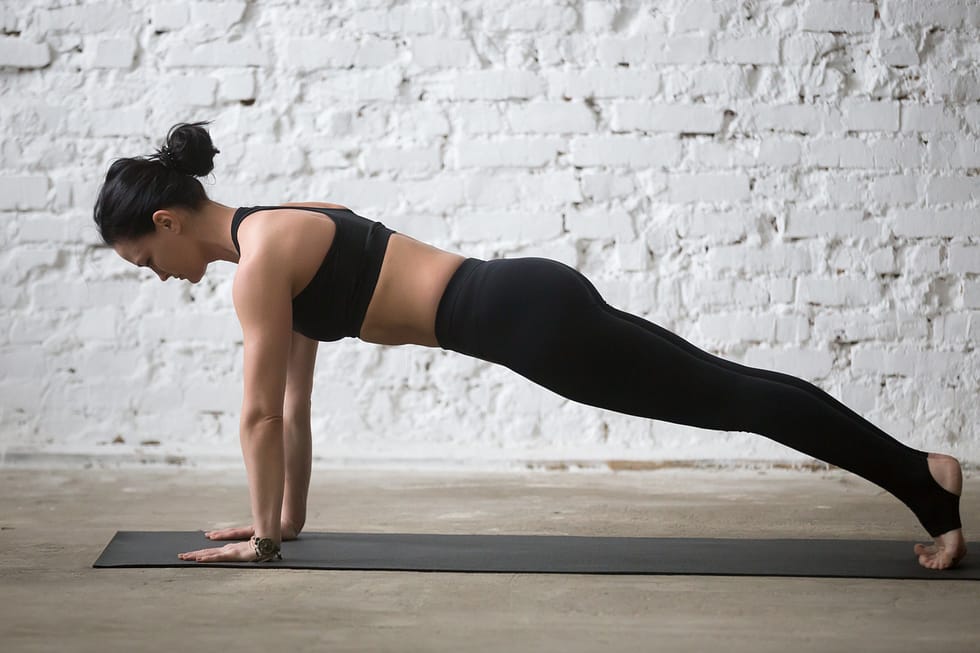Why You Should Add Planks to Your Exercise Routine
There are few types of exercises that are as effective at building core strength as planks are. Plank exercises are a simple but challenging workout where your body is elevated parallel to the ground to improve stability. Although crunches are normally the go-to abdominal exercise, planks can be a great addition to your exercise routine due to their vast benefits and flexible variations.
Different Variations of the Plank Exercise
One of the primary benefits of the plank is that there are numerous variations of this exercise, ranging from simple to complex.
High Plank
One of the most simple variations, a high plank is when you position yourself as though you are about to do a push-up, with your body perpendicular to the floor, your back straight, your arms directly beneath your shoulders, and your weight resting on your palms.
Forearm Plank

This type of plank is almost identical to a high plank, but instead of bearing your weight upon your palms, your weight rests on your forearms, which usually allows you to hold the position for longer.
Side Plank 
In this form of plank, you lie on your side and prop your upper body onto one of your forearms. Next, you raise your hips from the ground until your body is completely straight.
Walking Plank
Also known as an alternating plank, this exercise begins in a forearm plank position. With your body parallel to the ground, you then push up from the ground, one arm at a time into a high plank. While maintaining rigidity in the rest of your body, you continue to alternate between the high and forearm plank to perform a walking plank.
The variations of the planks are endless, and as your core strength improves, you can begin trying more intermediate and advanced exercises, such as:
- Reverse plank
- TRX plank
- Single-arm plank
- Bosu ball walking plank
- Scorpion plank
Health Benefits of Planks
Planks are one of the best exercises to incorporate into your exercise routine because they are highly versatile and can be completed as a body-weight exercise, meaning they can be performed anywhere. Other health benefits that planks have include:
Strengthens Core
Planks target a range of muscles in your body, such as:
- Transverse abdominis
- Rectus abdominis
- Oblique muscles
- Glutes
Core strength is essential for maintaining spine alignment, as well as protecting you from injury while performing other high-intensity exercises. By planking, your core strength will allow you to live an active lifestyle without placing you at high risk for injury.
Improves Posture
One prominent benefit of doing planks is that they will improve your posture. Correct posture keeps your bones and joints in proper alignment, which increases the efficiency of your muscles. In addition, you will also suffer less back pain by ensuring that your spine is in a neutral position.
Enhances Balance
To maintain balance and stability, the body primarily uses the core. By strengthening this muscle group through planks, your balance will significantly improve. Not only does this enhance your coordination in day-to-day life, but it also helps your balance when participating in sports and other high-intensity exercises.
Increases Flexibility
Planks expand and stretch a variety of different muscle groups in your body, such as the shoulders, hamstrings, and arches of your feet. This is why planks are a key element in many yoga routines, as this exercise considerably helps increase your flexibility while promoting overall holistic wellness.
Contact The Spine Pro
From lessening back pain to improving your balance, planks have a myriad of benefits for your health. However, if you are experiencing back pain that does not improve with these strengthening exercises, it may be time to contact Dr. Hooman Melamed. Dr. Melamed specializes in minimally invasive back surgeries and can help your back pain through conservative treatment options. Contact The Spine Pro today to learn more.





